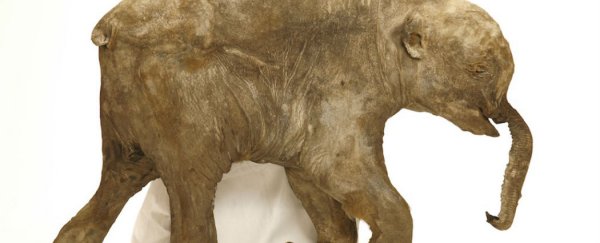Scientists have been discussing and debating over it for years, and now the first real step towards bringing the extinct woolly mammoth back from the dead is complete.
A renowned geneticist in the US has extracted DNA from the frozen remains of a long-dead mammoth found on Wrangel Island in the Arctic Ocean, created a synthetic replica of it, and implanted it into elephant cells that have been isolated in a petri dish, using a new technique of DNA splicing that allows for unprecedented accuracy. He reports that, so far, the altered elephant cells have been functioning perfectly.
Lead scientist George Church, a professor of genetics at Harvard University, and his team weren't able to synthesise the entire woolly mammoth genome, but instead selected genes that encoded particularly 'mammoth-like' characteristics, such as cold-busting fat, ear size, and a woolly coat.
"We prioritised genes associated with cold resistance including hairiness, ear size, subcutaneous fat and, especially haemoglobin," Church told Ben Webster at The Sunday Times. Haemoglobin is what scientists think helped the mammoths survive such a frigid climate thousands of years ago. "We now have functioning elephant cells with mammoth DNA in them. We have not published it in a scientific journal because there is more work to do, but we plan to do so."
If Church's experiments go as planned, this could be the first time we see a woolly mammoth alive in more than 3,300 years.
The technique used to join synthetic mammoth DNA fragments with the genetic code of an elephant is called CRISPR/Cas9, and while it's been recently used to create transgenic organisms, this is the first time it's been used on the DNA of an extinct organism.
The next step will be for the team to figure out how to replicate the process using elephant cells in situ, rather than in a petri dish. If they can do that using elephant eggs, they could theoretically produce an elephant with mammoth traits. But that's a big "if". And is that something we really want to do? As biologist Alex Greenwood from the Leibniz Institute for Zoo and Wildlife Research in the US told Sarah Knapton at The Telegraph:
"We face the potential extinction of African and Asian elephants. Why bring back another elephantid from extinction when we cannot even keep the ones that are not extinct around? What is the message? We can be as irresponsible with the environment as we want. Then we'll just clone things back?
Money would be better spent focusing on conserving what we do have than spending it on an animal that has been extinct for thousands of years."
Three separate teams around the world are working on resurrecting the woolly mammoth right now, so the ethical conversation might be too late, but at least we're having it. It's often pretty redundant to discuss how funds for one scientific experiment could be better served elsewhere because it's a whole lot more complicated than that. But I think in this case it's pretty valid. We're never going to stop the mammoth revival train - unless of course we make it illegal - but anything to get endangered animals into the spotlight has to be valuable.
Sources: The Telegraph, The Sunday Times
